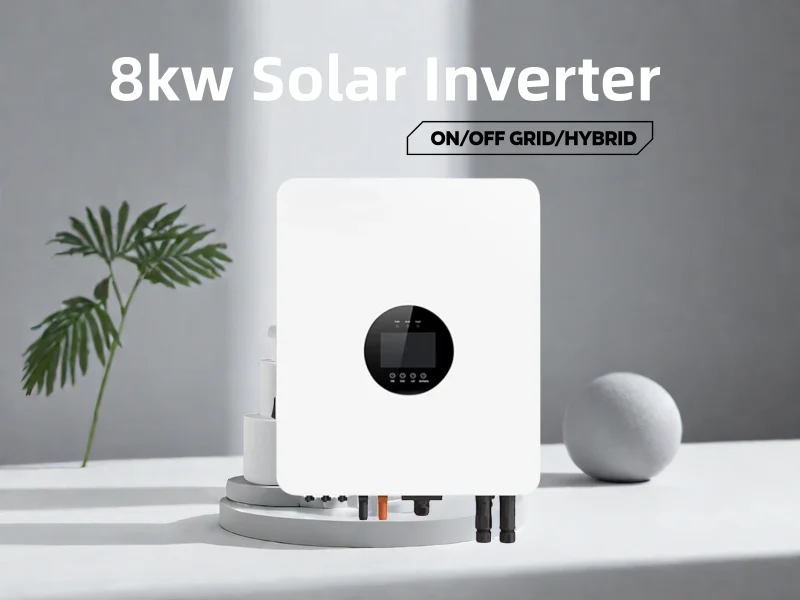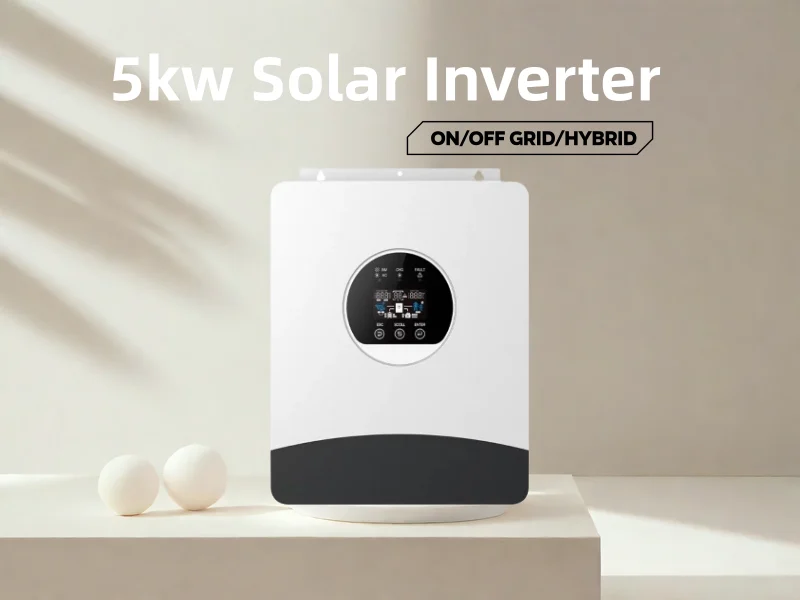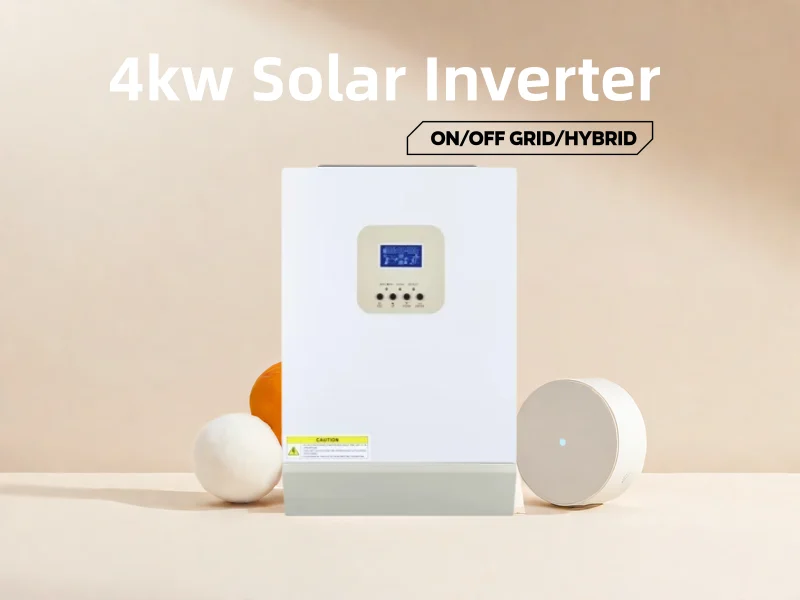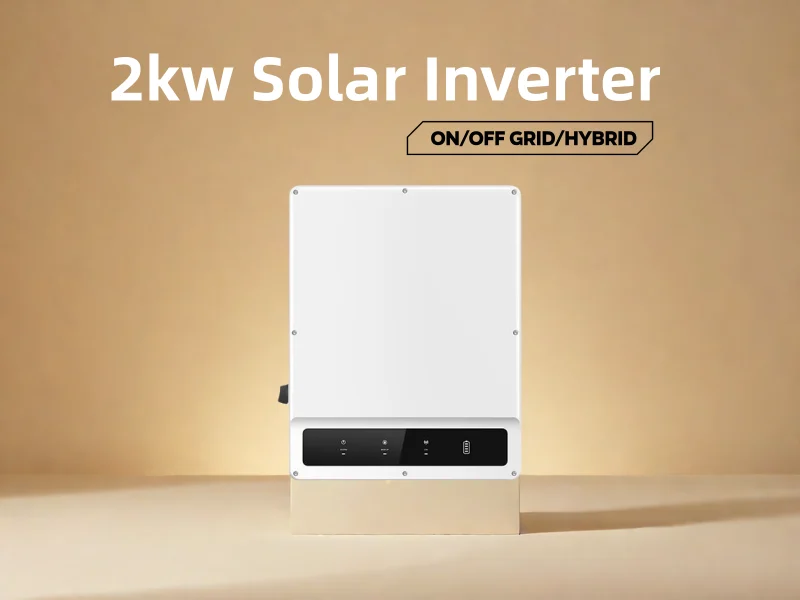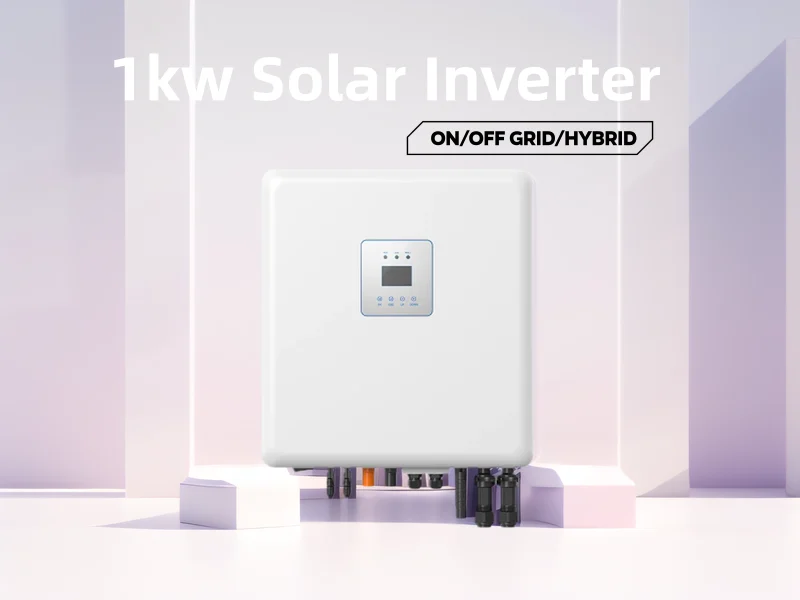How to Connect Solar Panel with Your solar inverter
Learn to connect your solar panel system using a solar inverter: off-grid, hybrid, and Pakistan setups for safe and efficient energy usage.
You probably have a solar inverter if you are setting up a solar power system, be that a residential model, an off-grid solar inverter, a solar inverter in Pakistan, or a hybrid solar inverter that combines grid + battery. But you must be wondering how to actually connect your solar panels to the inverter correctly and safely.
Getting this right matters: the inverter is the central component that converts DC power from your solar panels-and, if used, a battery-into AC power for your home or business. Mistakes affect efficiency, safety, and system lifespan.
Let's walk through the process clearly and step by step, including definition of terms, wiring sequences, key questions, real-world case notes, and practical tips from the field-without overwhelming jargon.

What is a Solar Inverter?
Well, here's a definition box to explain all the forms of the main term:
|
Term |
MEANING |
|
Solar inverter |
A device that converts direct current (DC) electricity generated from solar panels and stored in batteries into AC electricity usable by appliances or fed to the grid. |
|
Off-grid solar inverter |
A solar inverter used in systems not connected to the utility grid—often combined with batteries to provide all power needs locally. |
|
Hybrid solar inverter |
An inverter designed to work with solar panels, batteries, and the grid; it can switch between modes (grid-tie, battery backup, off-grid) when needed. |
|
Solar inverter in Pakistan |
Installation of solar inverters in the context of Pakistan considers peculiar grid conditions, load profile, and local regulations. |
Use these terms to describe whether you're working with grid-tie only, battery backup, or fully off-grid systems.
Why Proper Connection Matters
l Improper panel connections to your solar inverter risk over-voltage and/or current limits of the inverter, thus producing a reduction in efficiency.
l Poor wiring on the inverter, battery, or controller will result in inefficiencies, extra losses, or system faults in off-grid or hybrid systems.
l In countries like Pakistan, with considerations of solar inverter context, electrical stability, ambient heat, and grid reliability-all make wiring discipline and correct inverter configuration key.
l Thought-provoking question: If I choose a cheaper inverter and connect panels in a rush, how much performance am I sacrificing-and what are the hidden risks? Quite a lot-the risks include over-voltage, poor MPPT performance, and premature wear.
Step-by-Step: How to Connect Solar Panels to the Inverter
Step 1: Prepare your system and choose the inverter
l Choose an inverter that is rated for the size of your array, battery bank if used, and load. Check manufacturer’s specifications for maximum DC input voltage, current, MPPT function.
l When installing an off-grid solar inverter, make sure to get one that supports battery charge/discharge protocols.
l In Pakistan or similar markets-where the ambient temperature is high or grid is unreliable-make sure the inverter has good cooling and surge protection and there is local service support.
l Tip: Always read the inverter manual carefully. Most installation-related issues arise simply because of bypassing the instructions.
Step 2: Wire your solar panels (stringing & array configuration)
l Decide how panels will be connected: series vs parallel. Series increases voltage, parallel increases current.
l Make sure the total open circuit voltage (Voc) of your panel string does not exceed the maximum DC input to the inverter (important in hot ambient climates, because Voc increases with higher temperatures).
l Use properly rated solar cables, MC4 connectors (or equivalent); when applicable, follow correct polarity (+ to +, – to –). Also make sure that the connectors match (one user on the DIY forum said that mismatch of MC4 types caused issues).
Step 3: Connect solar panels to inverter (or to charge controller)
l In many systems, panel strings go into the inverter's DC input or via a charge controller, common in battery-based/off-grid setups. In the case of hybrid solar inverter systems, however, this connection is key.
l Ensure correct positive and negative wiring; ensure proper grounding/earthing is done.
l Verify that the MPPT setup on the inverter is configured for the voltage/current profile of your panel array.
l The inverter of the grid tie system will then convert panel output into AC and export it to mains; for off-grid/hybrid, the inverter will charge either the battery or supply an AC load.
Step 4: Connect inverter to battery if using
l If you have a battery bank, especially with a hybrid solar inverter or off-grid solar inverter, connect the battery to the DC battery input on the inverter. Pay strict attention to polarity and cable gauge.
l Ensure that the inverter/battery chemistry are properly matched (e.g., Li-ion, LFP) and the inverter can support the battery charge/discharge profile.
l Grounding: The inverter has to be earthed well at the battery/inverter cabin to avoid surges and hence protect equipment.
Step 5: Connect inverter to AC loads or grid
l In a grid-tie system, the inverter's AC output connects to your home breaker panel or utility interface. Installation should be done according to the local electrical code, especially in Pakistan or any other market that would have specific rules.
l In an off-grid setup, the inverter's AC output powers the loads directly (lights, appliances) or can feed a secondary distribution panel.
l Tip: Use correct sized breakers, ensure inverter output matches your load voltage/frequency (e.g., 230 V/50 Hz or 120 V/60 Hz as appropriate).
l Ensure all connections are proper, wires labeled, and protection devices placed such as MCBs and fuses.
Step 6: Test the system and monitor performance
l Before switching full load, verify inverter shows the correct DC input voltage, current, temperature, and AC output parameters.
l Run a small load test: power one appliance, watch performance, inspect for overheating, error codes.
l Post-install, monitor system performance over days/weeks: assess yield, inverter fault logs, battery performance (if used).
Some User Questions (and Answers)
Can I connect solar panels directly to an inverter without a charge controller?
Yes, if your inverter is a hybrid model with built-in MPPT and battery charger. In simple battery systems, you may also use a separate charge controller.
Is the wiring the same for a solar inverter in Pakistan as it is for a system in Europe?
Largely yes in terms of fundamentals, but local grid voltage/frequency, surge protection, ambient temperature, and component availability will vary—so always check local conditions and certified installers.
How many solar panels can I connect to one inverter?
That depends on the inverter rating in kW and panel output in Watts, plus your array wiring series/parallel and inverter's maximum DC input specs. Exceeding specifications reduces the lifespan or may even disable the function.
Real-World Cases
Off-grid solar system in a remote village (2023): the hybrid solar inverter supported a 5 kW panel array and 10 kWh battery bank. Installers reported that high ambient temperatures required extra ventilation at the location of the inverter to maintain performance over time.
Grid-tie + battery setup in Pakistan (2024): A commercial setup utilized a hybrid solar inverter, configured for 10 kW PV + 5 kW battery backup. The installer emphasized correct wiring and surge protection due to frequent voltage fluctuations on the local grid.
These cases demonstrate that even though the steps in wiring are similar across geographies, system design must reflect local climate, grid quality, and usage profile.
My Takeaway & Final Thoughts
From working with several solar installations, I've found that the wiring and connection phase—where solar panels meet the inverter—often identifies which projects succeed in the long term and which struggle. One great inverter does not simply guarantee performance; you also need correct panel stringing, cable sizing, cooling/ventilation, surge/gnd protection, and ongoing monitoring. If you are going to install or retrofit a solar inverter system-whether a grid tie, as visible in the Pakistani context, or off-grid hybrid-plan the wiring sequence carefully, use high-quality components, check the specification-voltage, current, MPPT range-and test thoroughly before committing.
If you'd like step-by-step visual diagrams comparing hybrid solar inverters vs off-grid solar inverters, or recommendations for top brands of solar inverter in Pakistan with local service availability, I can pull together a detailed guide.


